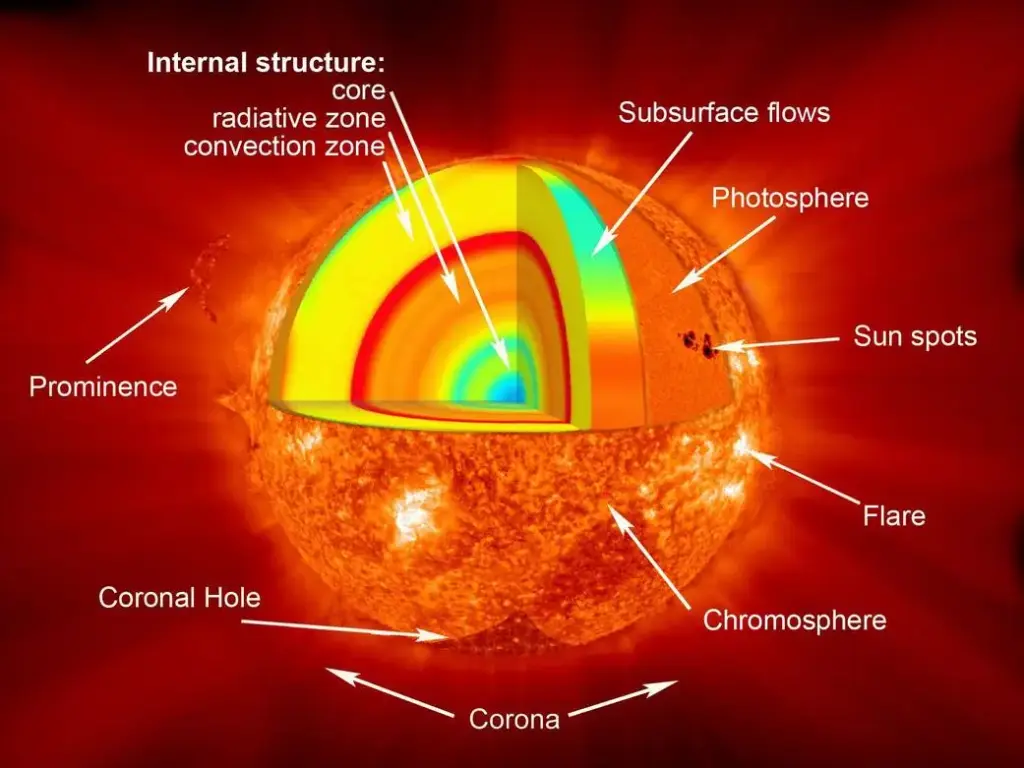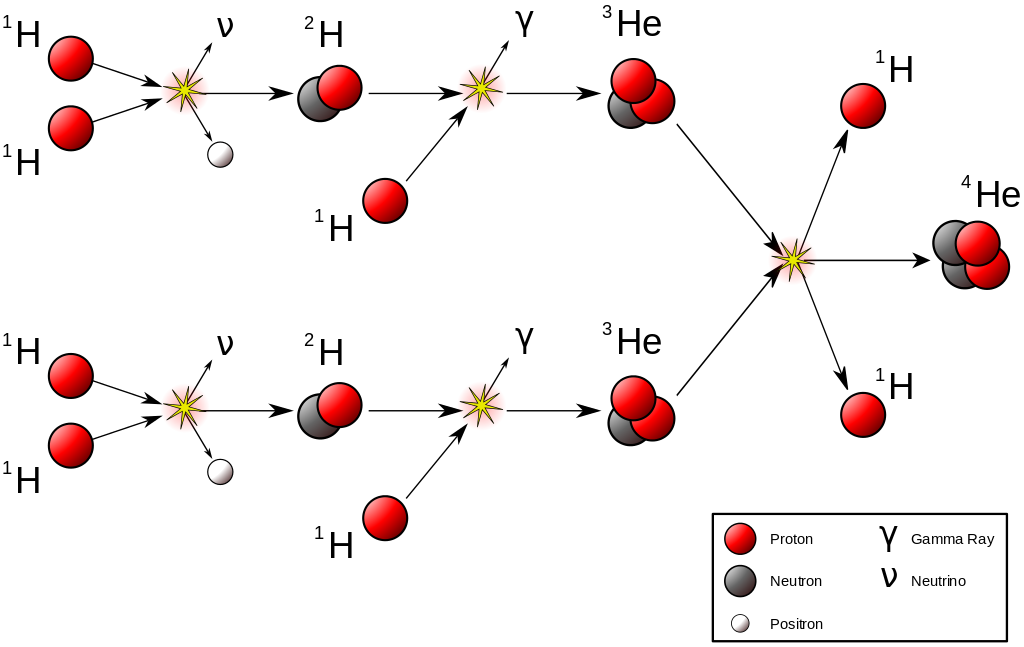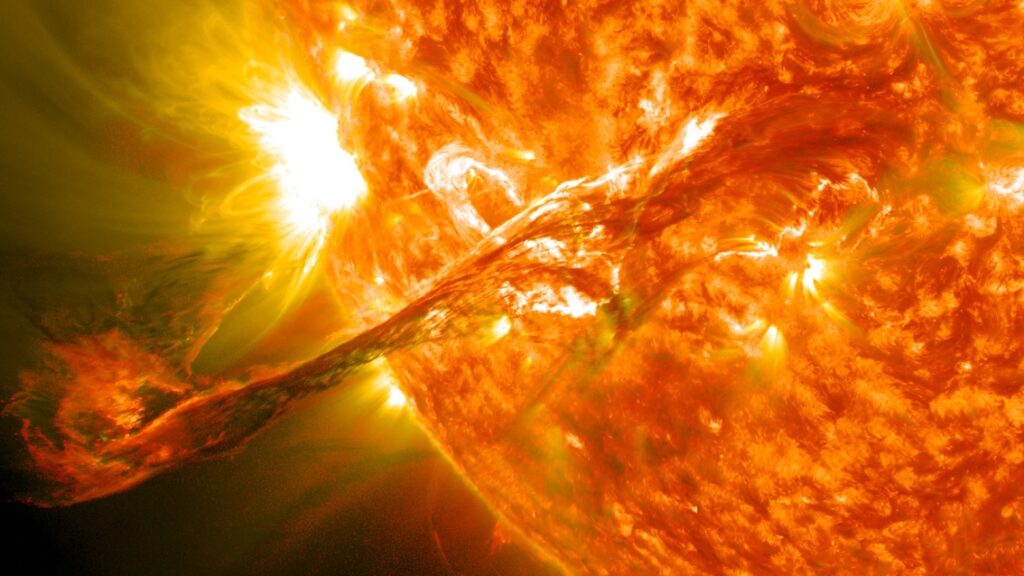Ever wondered what’s inside the Sun and Earth, why they’re so hot, or whether a pile of rocks could turn into a star—or even a black hole? Let’s explore these cosmic questions and uncover the science behind our planet and its star.
Reference by: How the Sun Shines: The Nuclear Reactions that Power the Sun
What’s Inside the Sun? Nuclear Fusion Explained

The Sun isn’t a giant ball of fire—it’s a powerhouse of nuclear fusion. At its core, where temperatures hit 15 million°C (27 million°F) and pressure is 250 billion times Earth’s atmosphere, hydrogen doesn’t just burn—it transforms. Here’s how:
- Fusion Basics: Two hydrogen nuclei (protons) smash together under extreme heat and gravity. Through a series of steps (called the proton-proton chain), they fuse into helium, releasing a tiny bit of mass as energy—think Einstein’s E=mc². That energy is what lights up our days!

- Plasma, Not Gas: The Sun’s interior isn’t liquid or solid hydrogen—it’s a plasma, a super-hot, ionized state where electrons are stripped from atoms. The core’s density reaches 150 g/cm³ (denser than lead!), but it’s still fluid-like, not a solid or liquid as we know it. Too hot for those states—hydrogen can’t hold together as molecules or crystals at these temperatures.
So, the Sun’s heat comes from this ongoing fusion, churning out energy for billions of years. No liquid or solid here—just a blazing plasma furnace.

Picuted here is a lighten blended version of the 304 and 171 angstrom wavelengths. Cropped
Credit: NASA/GSFC/SDO
What’s Inside Earth? Why So Hot?
Earth’s interior is a different beast. Unlike the Sun’s hydrogen plasma, Earth has a layered structure:
- Core: Mostly iron and nickel—liquid in the outer core (5,000°C), solid in the inner core due to pressure.
- Mantle: Hot, gooey rock (silicates) up to 3,700°C.
- Crust: The thin, cool outer skin we live on.
So why is Earth so hot inside? It’s not fusion like the Sun—it’s a mix of ancient and ongoing processes:
- Formation Heat: Earth formed 4.6 billion years ago from colliding space rocks (planetesimals). Those impacts melted the young planet, and some of that heat lingers.
- Radioactive Decay: Elements like uranium and thorium in the mantle decay, releasing heat like a slow cooker.
- Core Energy: When iron sank to form the core, it released gravitational energy, and as the inner core solidifies, it keeps the outer core molten.
Earth’s heat is leftover from its violent birth, boosted by radioactivity—not an active engine like the Sun’s fusion.
Can a Group of Rocks Stick Together to Form a Sun?
Could rocks clumping together make a star? Not quite. Stars like the Sun need:
- Mass: At least 8% of the Sun’s mass (80 Jupiters) to ignite fusion.
- Material: Mostly hydrogen and helium, not rock (silicates and iron).
Earth formed from rocky and metallic bits in a nebula, but a star needs a massive cloud of gas. A giant rock pile, even with high gravity, wouldn’t have enough hydrogen to fuse and shine—it’d just become a dense planet, not a Sun.
Large Mass = Black Hole?
What about a black hole? If you pile on enough mass—say, 2-3 times the Sun’s mass (4-6 × 10³⁰ kg)—gravity can crush anything into a black hole. A rock that massive wouldn’t stay rocky; it’d collapse past its Schwarzschild radius, where light can’t escape, forming a singularity of infinite density. But you’d need way more than a “group of rocks”—think stellar-scale mass!
Sun vs. Earth: A Density Twist
Here’s a fun fact: Earth’s average density (5.51 g/cm³) beats the Sun’s (1.41 g/cm³) because Earth is compact with heavy metals, while the Sun’s huge volume dilutes its light gases. But the Sun’s core? At 150 g/cm³, it’s denser than Earth’s iron core (13 g/cm³)—proof gravity can squeeze even “gas” tighter than metal.
Wrapping Up
The Sun’s a fusion-powered plasma ball, not liquid or solid. Earth’s a rocky-metal world with leftover heat. Rocks alone can’t make a Sun, and only insane mass makes a black hole. The universe is wild—hot, dense, and full of surprises. What’s your next cosmic question?